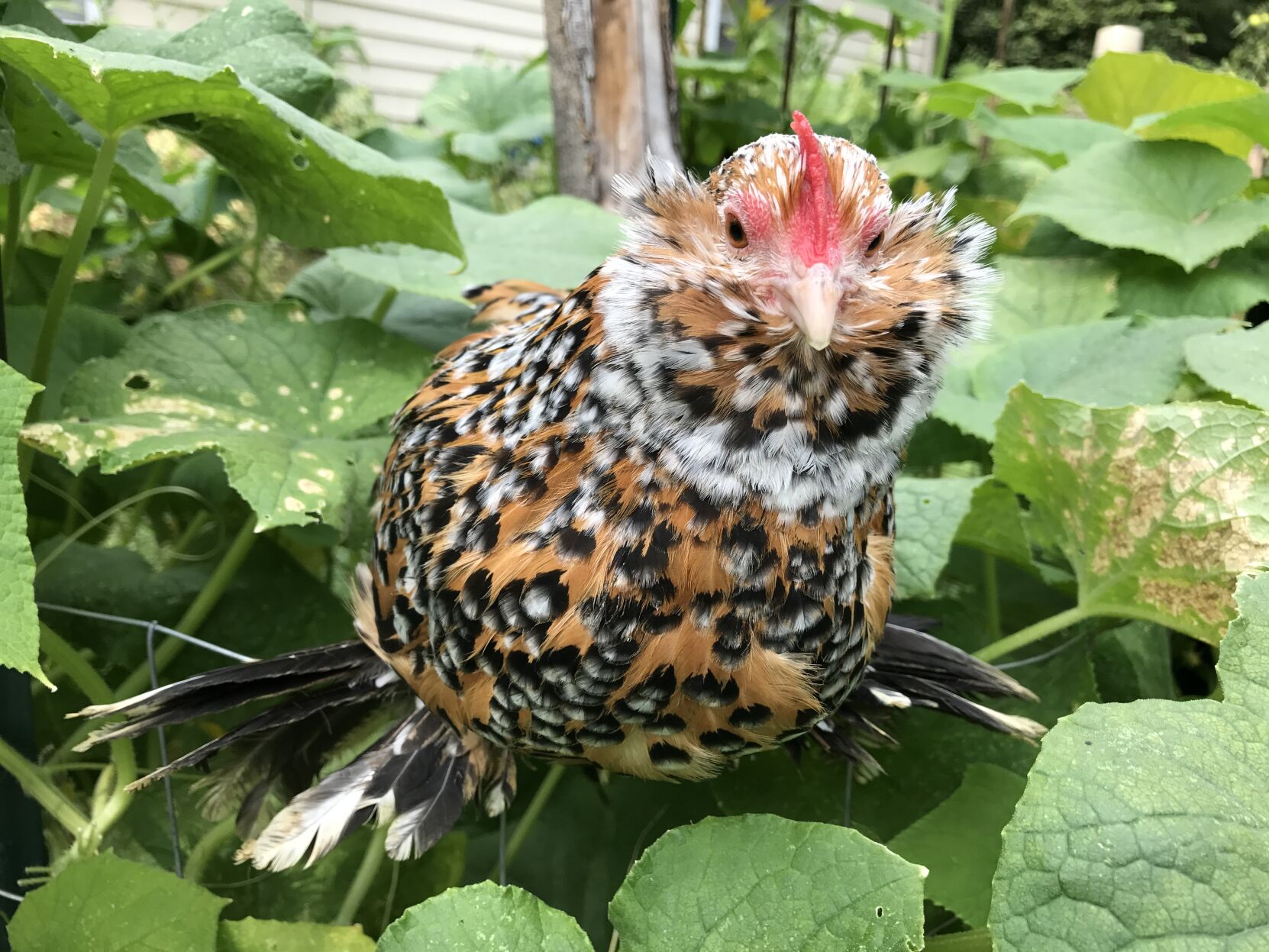One of the most beautiful chicken breeds in the world is the Belgian d’Uccles, also known as Barbu d’Uccles, or shortened to d’Uccles.
The pint-sized bird was created in the late 1800s by a wealthy rich Dutch businessman, Michael Van Gelder. Barbu means “bearded” in Dutch; Uccle is an area in Belgium. The lower case “d” in front of Uccle means “of.”
D’Uccles are true bantams, meaning there is no large fowl counterpart for the bird.
They have a boatload of personality and love the company of people.
Rich Vaughn has raised d’Uccles for years and loves them.
“They are not only beautiful,” the Lincoln, Neb. resident said, “but the most docile, loving, friendly breed of bantam there is.”
He calls them the “ultimate 4-H girl’s dream.”
“If you buy one from me and hold it on your lap going home, and pet it, and feed and water it, it will be your faithful friend for life,” he said. “It will sit on your lap and snuggle.”
The birds are too small to be raised for meat production and are decent egg layers but their eggs are small. Vaughn has used d’Uccle eggs when he needs a smaller egg while halving a recipe.
They’re just friendly, he said. “They’re very popular in the backyard flock world because you can walk out there, sit down, and they’ll come running over. They’ll jump up and sit on your legs. You can set them on your shoulders and walk around like a pirate with a parrot.”
Sometimes d’Uccles will be indignant when they don’t get attention.
“Sometimes they’ll get crabby with you if you don’t pick them up,” Vaughn said.
His roosters like to posture for the camera.
“They’re natural posers,” he said. “You walk by a pen, they stand up. They love to pose and they like attention.”
Because they are more susceptible to predators because of their small size, Vaughn keeps them penned day and night. He covers his pens with poultry netting and makes sure they’re locked up at night.
Vaughn pointed out there is a difference between hatchery eggs and breeders’ eggs. They are almost completely different breeds, he said, with the hatchery males tending to be mean and aggressive and the females tend to be skinny, skittish and scared.
He attributes that to genetic selection and that hatcheries don’t spend time with their birds.
D’Uccles have single combs and red or orange eyes. The birds have a muff and beard which extend around the head. Hens have very small or non-existent wattles. Their beaks are horn-colored.
Their necks are short, their skin is white, and their legs are feathered.
Recognized by the American Poultry Association in 1914, the APA accepts seven varieties: the mille fleur, (the most popular), porcelain, white, black, golden neck, mottled and lavender.
Feathers of the mille fleur variety, which means “many flowers,” are a rich red-brown with a nearly mahogany base and a black iridescent crescent band midway through. The tips of the feathers look similar to a white half-moon.
Hens weigh, on average, 22 ounces, where cocks will weigh about 26 ounces.
Because of the feathers on their legs and feet, muddy yards can be a problem for them. They’re not fond of cold weather, but some insulation in the coop can help.
They are often called an ornamental breed, but their calm, placid nature makes them wonderful birds for kids.
D’Uccles have even been called “lawn ornaments,” and at the turn of the 20th century, they were nicknamed “living flowers of our gardens.”
Vaughn and his brother Rod Vaughn of Fort Thompson, South Dakota, work as a team when it comes to d’Uccles. Rod raises them but due to his work doesn’t take time off to show them. Rich does the showing.
They are the third generation to be involved in poultry. Their grandparents, Marvin and Ruth Vaughn, were involved with Wyandottes and their parents, Robert and Joyce, raised silver-laced Wyandottes, turkeys and buff geese.
When Rich shows his birds, instead of using his first name, he uses the Vaughn Family name in honor of his grandparents’ and parents’ work.
Rich is on the board of the Nebraska State Poultry Association and also raises Jersey Giants. He is a primary breeder in the nation of both d’Uccles and Jersey Giants and exhibits both breeds at shows across the U.S.
Usually, the d’Uccles birds that Rich shows are pre-sold, and he finds great satisfaction in doing well with the birds at contests, then having the new owners picking them up after the show.
He loves mentoring others and selling national level show birds that make their new owners smile They’re usually big winners at poultry shows.
He estimates that about 90{f32667846e1257729eaaee80e922ba34a93c6414e9ad6261aff566c043b9e75d} of the time, Vaughn d’Uccles win champion or reserve at the contests he attends.
Freelance writer Ruth Nicolaus loves (nearly) everything about the Great Plains, but mostly its people. She lives in eastern Nebraska. Reach her at editorial@midwestmessenger.com.












/cloudfront-us-east-1.images.arcpublishing.com/pmn/XBARZ5OQNVFNRH5G55VAJGRQYE.jpg)